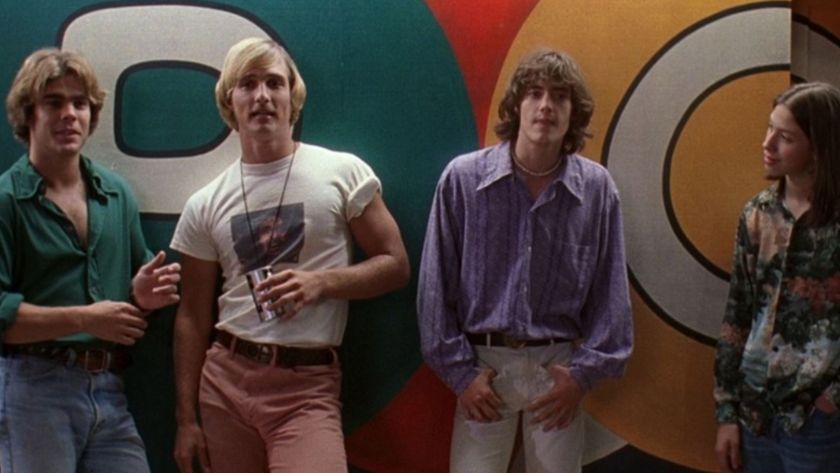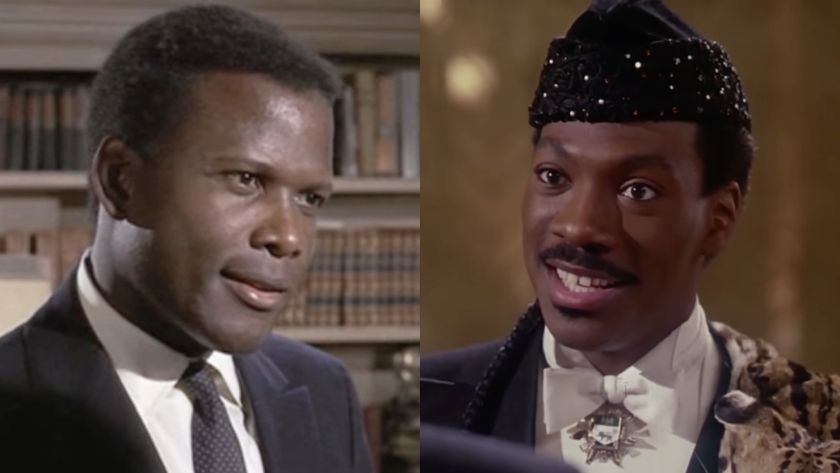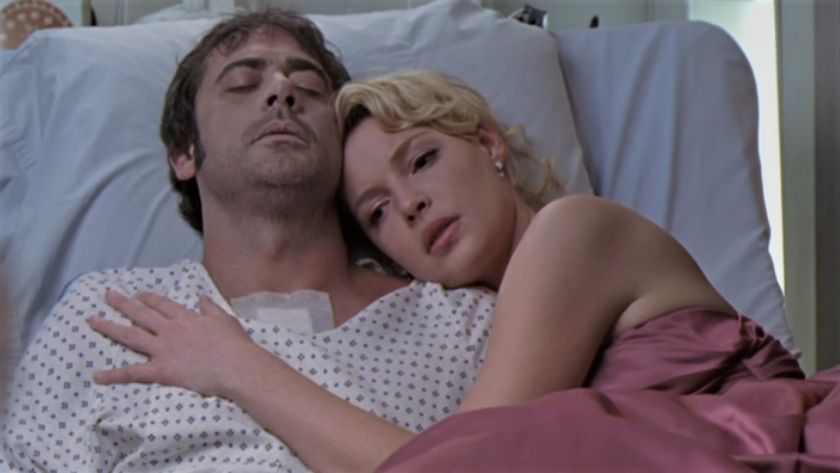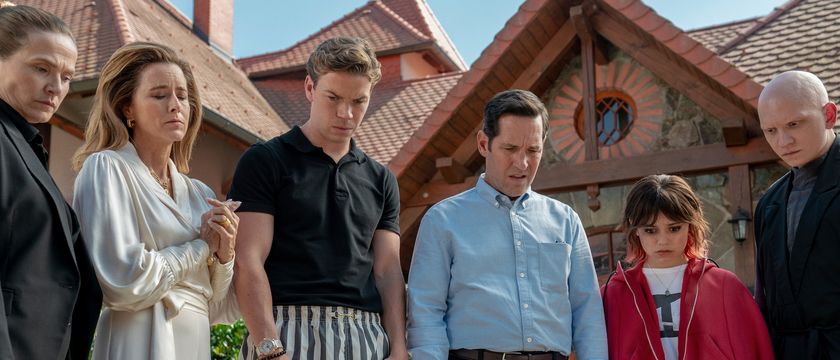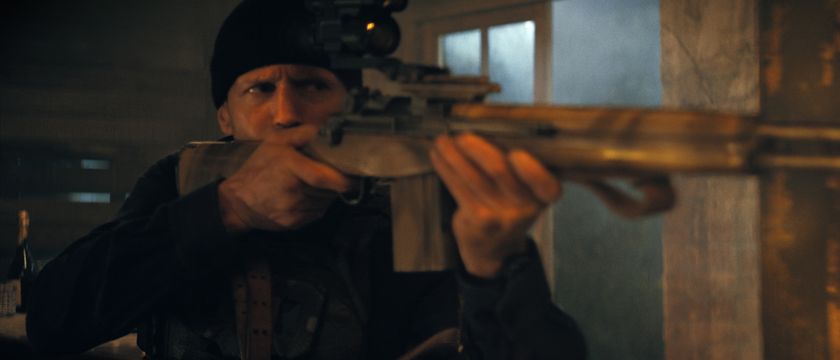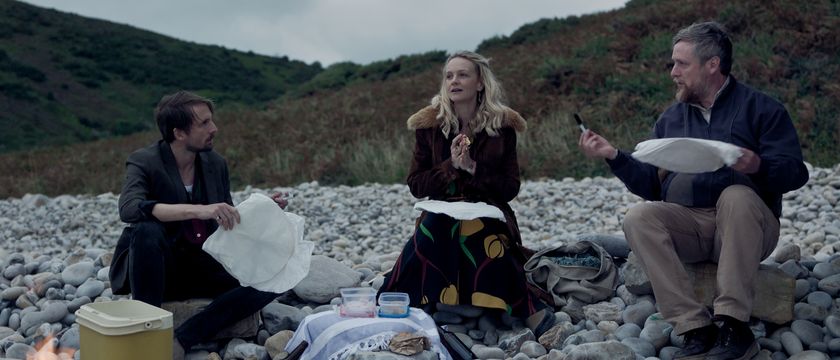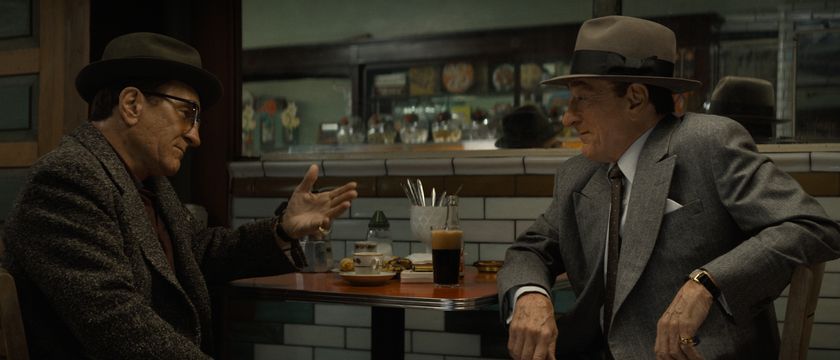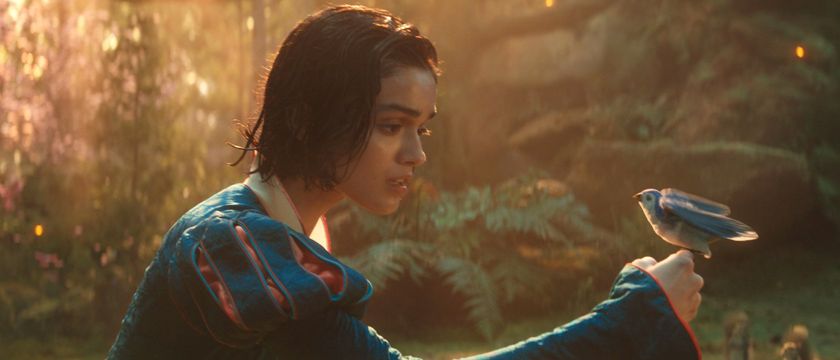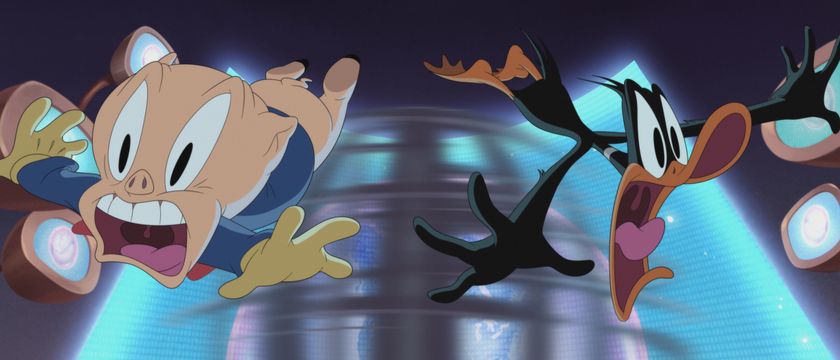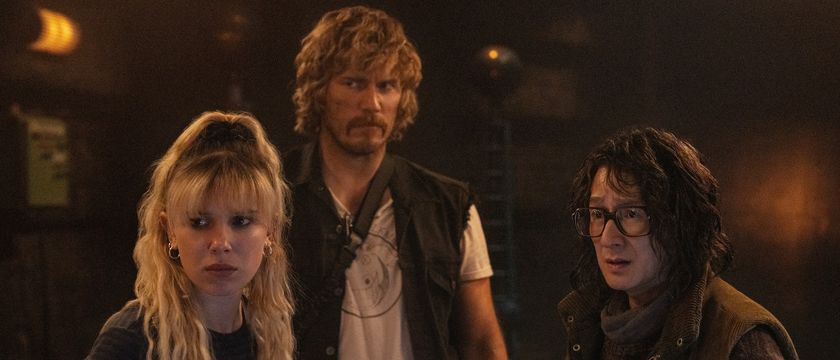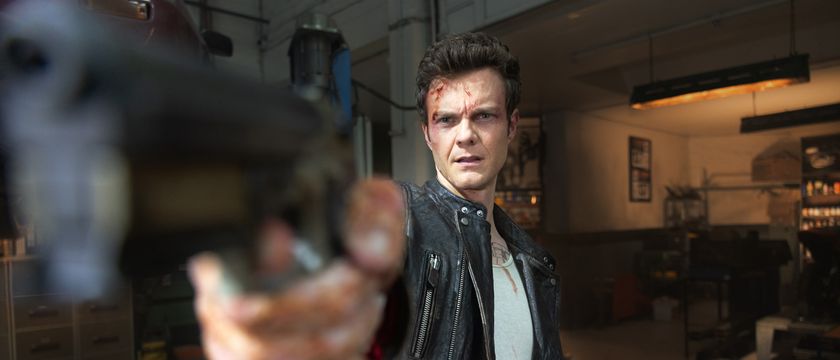A love letter to science-fiction films of old with a modern environmentalist message, WALL-E is another winning confection from Pixar, the folks who have made an art out of wrapping adult themes in childish whimsy and coming out with movies that please both elements. Starring a box shaped little robot with more than a passing resemblance to E.T., WALL-E is quite possibly the cutest Pixar hero ever, despite the fact that he's a trash compactor with eyes. A story centering on a wordless robot could be cold and uninviting, but not in Pixar's capable hands. Never has a robot been this compassionate: WALL-E's got heart.
The story of the film is deceptively simple. WALL-E (Waste Allocator Load Lifter - Earth Class) is the last of his kind, a robot created by the Buy-N-Large Corporation to clean up the piles of trash left on Earth by the conspicuous consumption of human beings. The humans themselves have evacuated the now-toxically trashed Earth for a Eden-like spaceship habitat called the Axiom (also created by BNL corp.), where they spend their days sipping meals out a cup and reclining on floating easy chairs. Though all his robotic compatriots have long since compacted their last, WALL-E continues plugging away at his job in an endearingly human way. He wakes up each day to the chime of a Macintosh starting up (score for the iFolks! Thanks Steve!) and heads out for another day among the trash heaps. He brings a battered coolie along with him to save the things he likes: a ping-pong paddle, a plastic dinosaur toy, a light bulb, a small seedling saved in an old boot. He ends each day in his home, watching an old video tape of Hello Dolly! - an important motif throughout the film.
Things change drastically for WALL-E the day EVE shows up. She is slick and futuristic and quite obviously a girl; WALL-E falls in love almost immediately. It turns out EVE has been sent from the Axiom to scan the earth for signs of habitable life. Their convincing courtship is done completely without dialogue, quite a feat for sound designer Ben Burtt who found a way to make ambient noise into recognizable words for WALL-E. Trying to impress the coolly modern EVE, WALL-E shows her the seedling he found, at which point EVE goes into a hibernation state and awaits the return of her spaceship. WALL-E, of course, cannot abide by his beloved EVE's status and hitches a ride into space to save her.
A bit disturbingly, all the humans on the Axiom have regressed to babyhood (enormously fat, with chubby extremities and little bone density) after 700 years of living up in space and drinking their meals through a straw. It seems that this may have been the aim of the BNL Corporation, who have instructed the ship's Computer Auto (Sigourney Weaver) to never let the humans return to Earth, even if it is found to be habitable once again. Though WALL-E's only aim on the Axiom is to find his beloved EVE, he finds himself wrapped up in a race to save the seedling he collected on earth from the treacherous tentacles of Auto. Along the way he meets a variety of robots, each with their own supposed job, all of which are related to cleaning up. It becomes clear that human consumption is what has trashed the earth and is now trashing Outer Space as well.
Though he is tiny and relegated to the dirtiest of the dirty jobs, WALL-E truly understands how to find value in sullied things and how to create magic out of useless objects. He is more human than the humans in that way and slowly, without preaching (he can't even talk), WALL-E begins to show them how to regain what they have lost through sloth and over reliance on technology. It's an environmentalist film, but also a poignant homage to simple joys in this era of iPods and digital everything.
Half of what is so enchanting about watching WALL-E, as in all Pixar films, is seeing how the filmmakers have created a working universe in which to play. There is no skimping here, no visible shortcuts. WALL-E himself has a million ways to express his emotions, from compacting into a box when he feels shy to wiggling his binocular-like eyes in awe when he first beholds EVE, all of which are related to physical, realistic components. That allegiance to authenticity allows the film to send its narrative to fantastic heights without seeming over the top or phony.
Like all previous Pixar films, the meaning of WALL-E is deeper and more profound than the merchandising opportunities found therein. It's a love story, yes, but it's also a story about staying true to your own heart in the blandly evil face of authority. It's a tale about saving the small things and cherishing the world you live in, no matter how imperfect its surface might seem. Andrew Stanton, who won an Oscar in 2004 for Finding Nemo, has certainly earned his place in the pantheon of animation pioneers, but with WALL-E, he has taken not only the art of animation, but the art of storytelling to new, unimaginable heights.
As a bonus, Pixar have affixed a Looney Tune-y short about an arrogant magician and his hungry rabbit to beginning of the WALL-E. Presto! is pure Looney Tunes and a fitting appetizer to the lovely film to follow.

